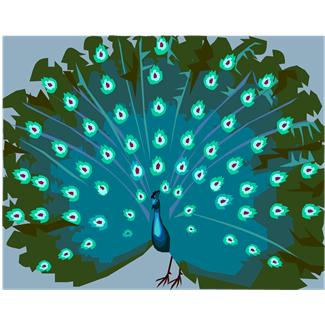Martial Arts Of The Mind
MARTIAL ARTS OF THE MIND (ISSUE 71)
By Diane Gold
Martial arts are a group of disciples known throughout the world as the art of war. This article will mention 1 such discipline specifically, kung fu, which is the term that has been associated with Chinese martial arts, but the article’s focus is generic. It is about using the method that is used to train the body to train the mind. This is martial arts of the mind.
What many outsiders (meaning people who are not practitioners or people who learn bastardized versions that are one-sided fighting technique) do not consider is that this “art” very much includes discipline of the mind and spirit. An example of this would be that we learn that quickest is not always best. Of course, when someone is looking to hurt us and we can outrun the aggressor or execute a physical technique more swiftly, this is good and to our betterment. But the physical aspect is secondary, even though we spend hours training the body. It is to train the mind and spirit, for the most part.
 Because of this training, we have the ability to consider taking the longer path if it is more strategic to get where we are going because we know patience, the first lesson in any martial art. We learn to take time out to consider, meditate, evaluate, even if, in physical combat, it is only a split second.
Because of this training, we have the ability to consider taking the longer path if it is more strategic to get where we are going because we know patience, the first lesson in any martial art. We learn to take time out to consider, meditate, evaluate, even if, in physical combat, it is only a split second.
Another example of using the martial arts mind would be that we allow a hostile, aggressive person to beep her horn at us on the parkway and we let her go ahead of us. We are secure in ourselves so there would be no need to fight for “control of the road” just because someone wants to advance in front of us. Some would say that giving up position is cowardice.
 To the kung fu artist or other martial artist, there is no sense in acting with impatience, hostility, irrationality unless the behaviors of the other affect us. If our self-esteem is intact and does not depend upon how others see us or treat us, we have no need to pump ourselves up like peacocks on display being macho to find a mate or bearded dragon lizards who puff their necks to make themselves bigger when they sense a threat.
To the kung fu artist or other martial artist, there is no sense in acting with impatience, hostility, irrationality unless the behaviors of the other affect us. If our self-esteem is intact and does not depend upon how others see us or treat us, we have no need to pump ourselves up like peacocks on display being macho to find a mate or bearded dragon lizards who puff their necks to make themselves bigger when they sense a threat.
Let’s look at the yin and the yang of things, yin meaning giving and yang meaning taking, more or less. If person 1 yells at person 2, person 1 is showing yang qualities, taking and aggression. Most people would react to person 1 by yelling back, giving it back to her. If person 2 does this, she is meeting yang with yang, like the standoff between 2 wolves, 2 rhinocerii, 2 warthogs. This causes friction, fighting, discomfort and rarely ends positively.
If person 2 is a skilled martial artist, she is trained not to develop aggression from someone else’s aggression. She maintains her own balanced nature. Often times, if person 2 lends an understanding ear and shows the yin, nurturing quality; person 1 will calm down. That is the nature of yin-yang. They balance each other everywhere, all the time. That separates us from wild animals.
Here’s a common scenario and a breakdown of possible action steps in response:
I have a conversation with my friend, and we disagree. My friend yells at me, insults me and walks out on me. I have 2 options:
A) I can choose to call my friend back later or the next day because I want to see how she is doing. Since I do not need to keep score of my friend’s poor behavior, I do not shun my friend because she shunned me. I take on the role of nurturer toward my friend. It usually ends up putting me in role of teacher, not that that is my intention, but that’s what happens when I call and communicate well.
B) I can choose not to call my friend because I am keeping score. Who does this serve?
When we are young, we say,
“I’m not gonna be your friend because you said this to me, and you didn’t apologize.”
This is expected because we work from our feelings alone.
 When we are older, acting the way of the child does not utilize our reason and the wisdom from our experience we have taken so long to gain.
When we are older, acting the way of the child does not utilize our reason and the wisdom from our experience we have taken so long to gain.
During kung fu training, we study and learn who we are. We do focus training which is mental and physical. We learn not to react because someone reacts. (We may act if we are in danger, but we act in the way that best suits the situation, not the way someone else acts.)
We don’t have to defend because someone has offended. If our personal space or that of someone we want to protect is not violated, we don’t have to take an action. Part of this is because we have physical confidence. But, mostly, it’s because we have a greater capacity for patience, tolerance and understanding because we have taken the time to look inward. We also have developed an attitude of responsibility to communicate clearly to others, because we have learned the right way to be.
 CONCLUSION
CONCLUSION
Most of what kung fu or any true martial art is is a systematic approach to living our lives with temperance, forgiveness, honor, respect for others and respect for ourselves. So, before we go on with a few action steps, here is A SECRET, which is only an interesting fact, not known by many who haven’t studied kung fu.
The words “Kung” and “Fu,” together, refer to work successfully accomplished over time. Here’s the secret: What’s fascinating to most of us is that kung fu can refer to any work where someone has applied mastery. That means a chef, a hair stylist, a chemist, a firefighter, a writing professor can all be doing “good kung fu.” which is the translation when we say ho kung fu to someone other than a martial artist studying the Chinese variety.
What this means is that people who master their craft are kung fu artists. They use the same focus, patience, examination, reason, integrity, perseverance, creativity and self-discovery used by the kung fu master. So, the secret is not really a secret, as you see. But, it defines people and process and the fact that the study of kung fu is parallel to the study of music, dance, invention, psychology, masonry, cooking, surgery, oral presentation. And martial arts of the mind is studied by all who train in every martial art.
ACTION STEPS
Consider taking these action steps in the spirit of martial arts of the mind. You may find, if you haven’t already, that reducing aggressive behavior we show due to sadness or anger is not as hard if we give up our own behaviors that do not support us. These methods do not work 100% of the time, but they give us great opportunity.
1) Next time someone yells at you, decide whether the someone is important enough for the relationship to continue. If the answer is yes,
a) if the person is inconsequential, let it go completely.
b) if the person is valuable to you, tell the person s/he is hurting your feelings. When we personalize that what someone has done hurt us, this usually makes the someone stop, take note and change attitudes or even apologize.
c) if the person has value, gently have an internal dialogue with yourself. Recognize that the someone’s being nasty to you usually means you have struck some insecure bone in that person or the person is in pain on her own. Be compassionate of that insecurity or pain by not macho-ing out (yelling back to be the big cat on the mountain). Reach out to the person and ask how you can help and alleviate any bad feelings.
 2) See how it feels to withhold aggression. Does it make you feel good or bad? If you feel good, great. Continue it. If you miss the anger conjured up by retaliation, at least you will know what you like. And you will have martial arts of the mind to think about since we can all learn it and implement it in our lives.
2) See how it feels to withhold aggression. Does it make you feel good or bad? If you feel good, great. Continue it. If you miss the anger conjured up by retaliation, at least you will know what you like. And you will have martial arts of the mind to think about since we can all learn it and implement it in our lives.
FEEDBACK
Please leave a comment and LIKE.
DIANE GOLD, AUTHOR
Diane Gold, Founder of Warriors of Weight, Turning Habits Into Health, is a mentor in tai chi, kung fu and meditation, a music, fitness and stress expert, dedicated mom, studying plant-based nutrition.
She believes that martial arts of the mind is something each one of us can cultivate. This comes with proper contemplative training. She says,
“The training must be systematic, so that we learn 1 step, then another, then another, leading to mastery of our own selves. The martial training applies in all walks of life, no matter what we are doing. We use the principles of empty mind and building a foundation that we employ in the physical training to learn martial arts of the mind.”








[…] What Martial Art … Helps Change A Habit? […]
[…] Martial Arts Of The Mind […]
[…] Martial Arts Of The Mind […]
[…] Martial Arts Of The Mind […]
[…] Martial Arts Of The Mind […]